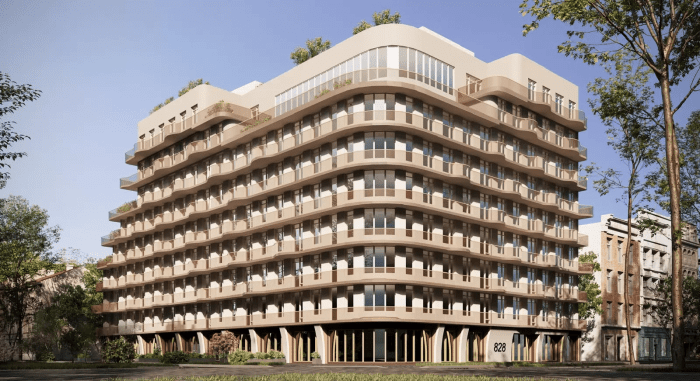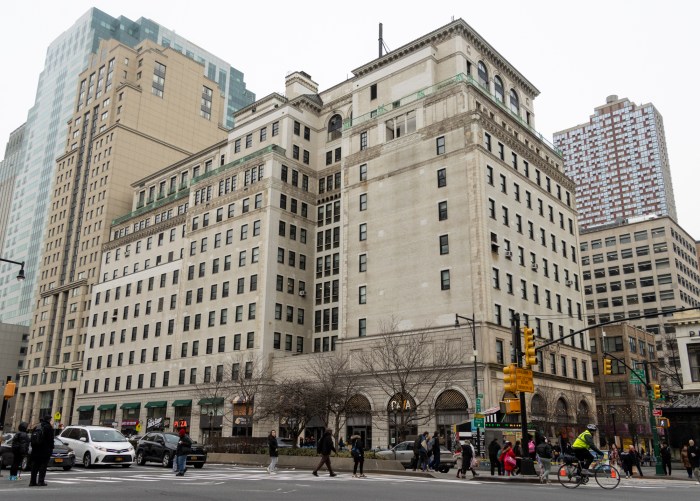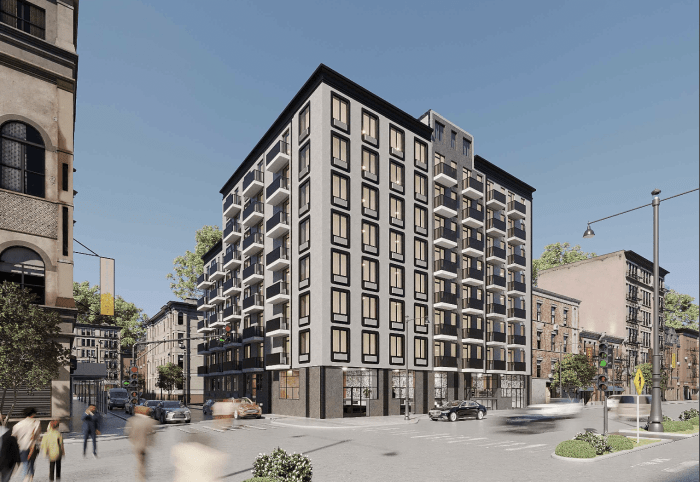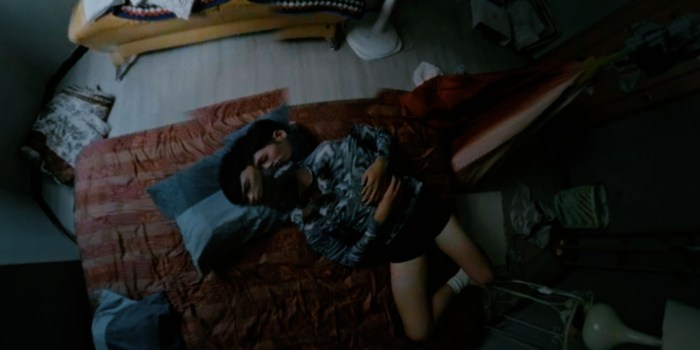After first contemplating a stretch of Willoughby Avenue and Hart Street in Bed-Stuy for protection in 1992, the city’s Landmarks Preservation Commission has officially added it to the calendar for consideration as a new historic district, triggering an upcoming public hearing.
At today’s meeting, the commissioners unanimously voted to calendar the proposed new historic district, which includes more than 100 houses and covers most of the two blocks between Nostrand and Marcy avenues. Before the vote, LPC staff presented considerable historical research into the area and recommended the commissioners move the proposal forward.
The blocks consist of “historically and architecturally significant brownstone streetscapes that stand out within the broader neighborhood and exemplify its early residential development,” LPC researcher Sarah Eccles told the commissioners. She said the houses had maintained good integrity in the nearly 150 years most had been standing and created “a distinct sense of place within the Bedford Stuyvesant neighborhood.”
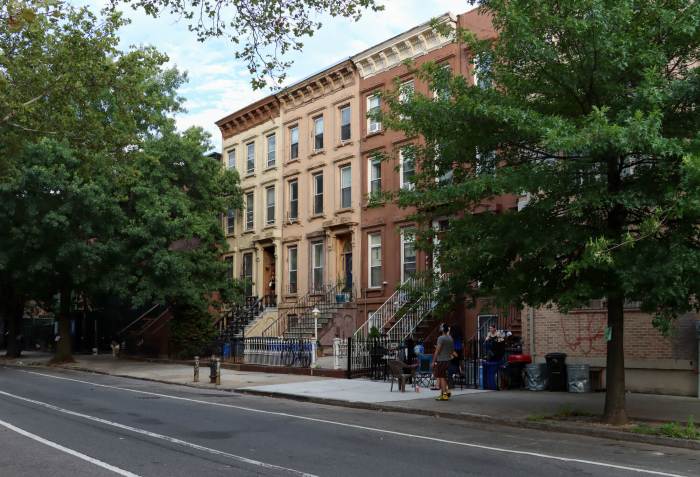
Local group Advocates for Willoughby Hart has been pushing for the area’s landmarking since the demolition of the Jacob Dangler mansion in 2022. Efforts have included researching the proposed area, mobilizing neighbors, organizing community meetings, and gathering support through a petition. The latter has 1,124 signatories.
Many of the group’s members tuned into today’s meeting, and a rep told Brownstoner following the vote: “We are delighted and proud that the LPC voted to calendar the proposed historic district today. Along with our work to save 441 Willoughby, we’ve been at this effort for nearly two and a half years and are thrilled to see our hard work recognized by the commission. We eagerly await a public hearing date and, ultimately, a designation.”
Molly Salas, one of the group’s leaders, added she had “dialed into the LPC vote to calendar from vacation, and received so many texts from neighbors absolutely buzzing about the vote. The community has electric energy right now after receiving this good news.”
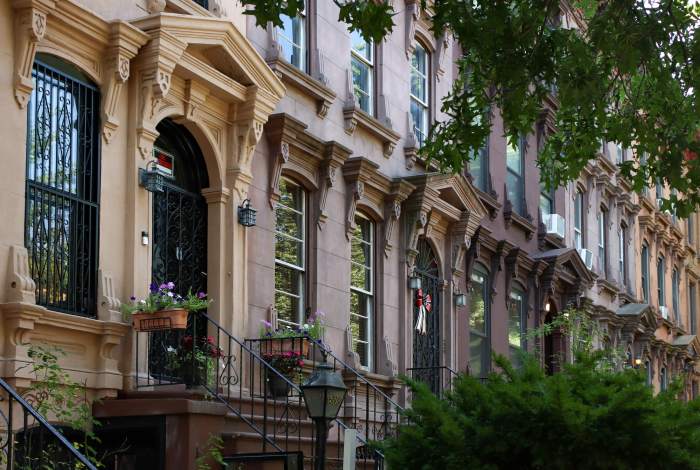
However, some homeowners on the block remain concerned about landmarking and the impact it will have on what they can do to their properties, staff said at the meeting.
A second petition, this one against the landmarking effort and titled Save Homeowners Rights, has been organized by a group called Willoughby & Hart Neighbors, but it is unclear who is behind the group. While a substantial number of the 1,754 signatories list their ZIP code as Bed-Stuy, the petition says the majority of signers are covered by the ZIP code 11219, which is in Borough Park. (A number of developers and investors with properties in Bed-Stuy and adjacent neighborhoods call the area home.) The petition states: “The landmarking of these blocks would significantly impede the community’s growth and compromise the integrity of the buildings.” Brownstoner reached out to the email behind the petition, but didn’t hear back.
Eccles told the commissioners that during the staff’s study, they held three public meetings with property owners to talk about the proposed district and how homeowners could work with LPC if landmarking goes ahead.
“We are aware that some permits for facade work and interior work have been filed and issued at the Department of Buildings, and we will continue to monitor that work and work with property owners,” Eccles told the commissioners.
In response to a question from Commissioner Mark Ginsberg about what concerns staff had heard, LPC director or research Kate Lemos McHale said the main concerns were around LPC’s regulatory process and how landmarking would affect homeowners’ abilities to modify their houses. She said the team would continue to work with homeowners to build understanding about the LPC process for approving additions or replacements.
LPC chair Sarah Carroll added it was “really important to us to engage everybody and make sure that everybody is informed and able to participate in the process.” She said LPC would provide information to all property owners prior to a public hearing, so they “can participate in an informed way, and I’m sure that we will hear lots of opinions during that process.”
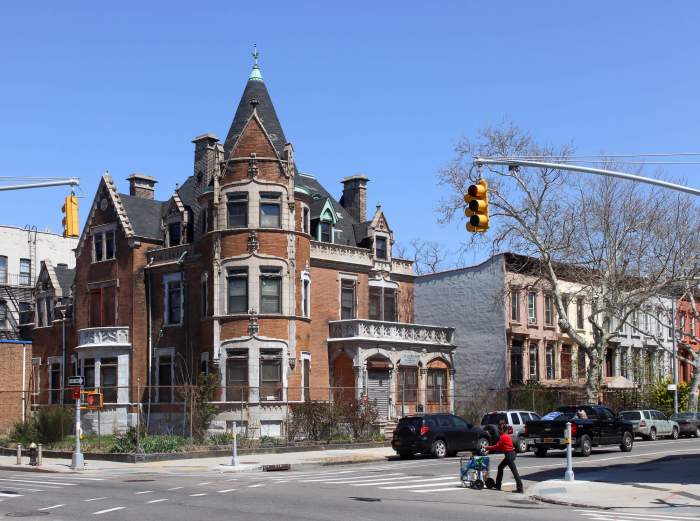
Explaining the history of the district, Eccles said the “remarkably intact group of brownstone row houses” were constructed by early landowners and developers between 1872 and 1891, largely in the most popular style of the time, Neo-Grec.
The location of the district is in what was historically known as Cripplebush, settled in the mid-17th century along Cripplebush Road, which connected Bedford Corners to Newtown in Queens, Eccles said. The land was mostly owned by early landowner Henry Boerum, who started developing the area with his family in the 1870s. Eccles said many of the houses developed by Boerum are still intact.
Other houses in the district were constructed by builders, owners, and local architects including Thomas E. Greenland, Arthur Taylor, and Isaac D. Reynolds, Eccles said. By 1898, all the buildings in the proposed district were constructed.

While the most common style in the proposed district is Neo-Grec, the oldest houses in the district, built by the Boerums in 1872, are a small group of six Second Empire-style row houses on Willoughby Avenue. Eccles said they are “exemplified through their distinctive mansard roofs, which have largely remained intact.”
The Neo-Grec houses most common in the proposed area are exemplified through projecting angular bays, incised detail, high stoops, and heavy door hoods, Eccles said. She added some of the latest buildings on the blocks are on Hart Street, and were designed in a hybrid Queen Anne and Romanesque Revival style, the latter “exemplified through its distinctive rough-faced stone, rusticated basements, and arched entrances.” The Queen Anne elements include “checkerboard patterning, intricate carved detail, and imposing L-shaped stoops.”
Altogether, Eccles said, “the consistency and age and style creates a distinctively cohesive streetscape.” Alterations existing on some properties “do not detract from the strong historic architectural character, streetscape integrity, and sense of place consistent with similar historic districts,” she added.
The proposed district does not include the now-empty lot where the Danger Mansion once stood.
In regards to the area’s early inhabitants, Eccles said the row houses were first occupied largely by local Jewish business owners who had immigrated from Russia. In the 1920s, many were split into multi-family residences and rented out.
By the mid-20th century, Eccles said, the local Black population grew, as it did in the rest of Bed-Stuy, with 80 percent of the neighborhood’s residents identifying as Black in 1969 and 10 percent identifying as Puerto Rican. Notable local residents included famed jazz drummer Max Roach, who lived at 448 Willoughby Avenue, and a German countess, who lived at 27 Hart Street.
Eccles said residents also included “a pioneer in the sheet metal, steel, and iron industry; a female doctor practicing in Brooklyn since 1902; a veteran of the Spanish-American War; a captain of the Civil War, who served under the Missouri volunteers; an African American woman who was a project manager of the WPA in the 1940s; and everyday working people.”
“The historic rows within the proposed district are close to 150 years old and have been well maintained by generations of families,” she added, before recommending the district be calendared by the commission.
Commissioner Fred Bland asked the staff why it had taken so long for the proposal to reach the commissioners given it was first investigated in 1992. Lemos McHale said it was due to the city having a number of gems that it was investigating for landmarking, and the time that took came down to process and how it prioritized areas.
Following the vote to move the proposal forward, the proposed historic district will be the subject of a future public hearing during which community members will have the opportunity to share their views on landmarking it.
A date has not yet been set for the hearing.
This story first appeared on Brooklyn Paper’s sister site Brownstoner













